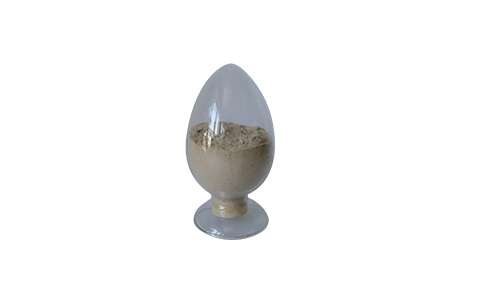Phosphate Bonded Refractory Castable Description
Phosphate bonded castable is unshaped refractory material which adopts phosphate or poly phosphate as binder, refractory aggregate and additives are used as matrix material. There are two kinds of phosphate used for making phosphate bonded refractory castable, one is acidic phosphate binder and the other is poly-phosphate binder. Acidic phosphate binder such as Al(H2PO4)3 and H3PO4, are usually used for the preparation of neutral or acidic refractory castable, for example, silica castable, clay castable, high alumina castable, corundum castable, zircon mullite castable, zircon corundum castable, etc. Poly phosphate binders such as NO5P3O10 and (NaPO3)6, are mainly used to make basic refractory castable, such as magnesia castable, magnesia alumina castable, etc.
Acidic Phosphate Bonded Castable
Acidic phosphate bonded castable belongs to neutral or acidic castable, it is suitable for neutral or acidic working environment. Since acidic phosphate doesn’t react or only slowly react with acidic or neutral refractory material at room temperature, the coagulation and hardening of acidic phosphate bonded castable is realized by adding coagulator which can react with acidic phosphate. Usually used coagulators are MgO, CaO•Al2O3, CaO•2Al2O3, NH4F, ZnO, Nacl, talc, etc. If MgO is used as coagulator, it reacts with aluminum di-hydrogen phosphate and produces aluminum magnesia phosphate, therefore the castable is hardened.
Al(H2PO4)3 Bonded Castable Physiochemical Index
| Item |
Clay castable |
High alumina castable I |
High alumina castable II |
| Al2O3 % |
45 |
60 |
75 |
| Dried Bulk Density g/cm3 |
2.23 |
2.34 |
2.60 |
| Thermal shock resistance (800℃, water cooling) |
>50 |
>50 |
>50 |
| Cold compression strength(110℃, 24h) Mpa |
26.0 |
28.0 |
34.0 |
| Linear change rate(1400℃,3h) % |
+0.8 |
+0.72 |
+0.45 |
| Refractoriness under load (0.2Mpa)℃ |
1410 |
1470 |
1450 |
Acidic Phosphate Bonded Castable Applications
Compared with calcium aluminate cement bonded castable, acidic phosphate bonded castable has better cold compression strength and thermal shock resistance.Therefore, it is usually used as industrial furnaces linings and middle temperature abrasion resistant linings where temperature changes frequently and significantly. Acidic phosphate bonded castable is also used as thermal patching material.
Polyphosphate Bonded Castable
At room temperature, polyphosphate water solution can react with MgO or CaO contained in basic powder material and produce composite phosphate, which can make the castable hardened. But the reaction speed is slow, so polyphosphate is suitable for the binding of basic refractory castable and there is no need to add coagulator. The setting process is: poly-phosphate dissolves into water, and gradually hydrolyzes into dihydric phosphate and monohydric phosphate. Then dihydric phosphate and monohydric phosphate react with MgO or CaO and form compound phosphate.
Polyphosphate Bonded Magnesia Castable Index
| Item |
Clay |
High alumina I |
High alumina II |
| Al2O3 % |
40~45 |
60~65 |
70~75 |
| SiO2 % |
35~40 |
23~30 |
15~20 |
| CaO % |
5~6 |
5~6 |
5~6 |
| Bulk Density(110℃, 24h) g/cm3 |
2.0~2.1 |
2.4~2.5 |
2.7~2.8 |
| Modulus of Rupture (110℃, 24h) Mpa |
4.5~6 |
5~6 |
5.5~6 |
| Cold compression strength(110℃, 24h) Mpa |
30~35 |
40~45 |
45~50 |
| Linear change rate(1350℃) % |
+0.1~0.3 |
-0.1~0.3 |
-0.1~0.5 |
| Working temperature ℃ |
1350 |
1450 |
1550 |
Polyphosphate Bonded Castable Applications
Polyphosphate bonded castable is basic refractory product, it has good alkali corrosion resistance. Therefore, polyphosphate bonded castable is usually used for the casting of high temperature smelting furnace working lining, high temperature metal liquid vessels inner lining, launder inner lining and so on. Besides, polyphosphate bonded basic castable are also used for the patching of electric arc furnace linings.

